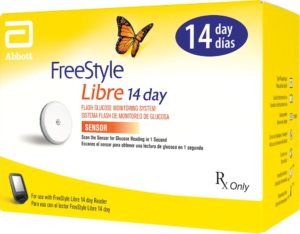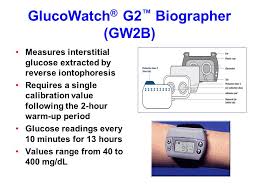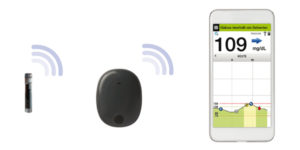List of FDA Approved Glucose Meters
In diabetes, the body loses its ability to produce insulin (blood sugar levels regulating hormone). This puts Type 1 and Type 2 diabetics at risk of either too low blood sugar levels (hypoglycemia) or too high blood glucose levels (hyperglycemia).
Both outcomes are undesired as they can easily lead to other complications such as blood circulation problems, kidney issues, and eye problems. Regular blood glucose monitoring is one of the main first-line defenses against the complications of diabetes.
The most widely practiced methods of monitoring blood glucose level are by using a lancet to prick a finger. However, due to the discomfort and pain associated with the process, blood glucose monitoring becomes a daunting process for many diabetes patients.
Needle-free and non-invasive methods of testing blood sugar levels are now being developed to help ease the burden for people living with diabetes. These methods may also prove to be cheaper particularly because patients can do away with buying disposable test strips and lancets. Non-invasive glucose monitoring systems make the process as painless and easy as possible in order to encourage diabetics to monitor their blood glucose levels as prescribed.
Non-invasive blood sugar monitors can also be linked with tablets and smartphones, making it easier to keep track of your blood glucose levels and trend through the day or even weeks. These automated measurements make it possible for people living with diabetes to get insight on why or when their blood glucose drops or rises.
How do blood glucose meters work?
Since 1970s scientists have been trying their level best to come up with non-invasive methods of detecting blood glucose levels .Today there are many promising methods in use, each with its advantages and shortcomings. The most common methods used include:
- Using radio waves on the fingertips
- Application of ultrasound waves that penetrate the skin
- Measuring infrared radiation that the body emits
- Measuring of the viscosity of fluids beneath the skin
- Application of beam near-infrared energy to penetrate the skin
Although hundreds of millions of dollars’ have been spent in this research, no technology has been declared as an outstanding method in non-invasive glucose monitoring. Notably, further research is needed in improving the reliability and accuracy of these methods, manufacturers are tirelessly developing and marketing glucose monitors that are user-friendly.
Top Non-invasive Glucose Monitors Currently in the Market
If you are willing to buy a non-invasive glucose monitor, there are several varieties in the current market. However, your health is a sensitive issue; thus, take your time in making informed choices.
The first and most important guideline to narrow the selection list is by considering devices that have been approved by FDA. Since 2017 FDA has been reviewing and approving several devices and the list has been growing since then. These products need to get smarter, easier to use, and better to remain relevant in the thriving competition. As indicated in the list below.
-
FreeStyle Libre Flash

Notably, you have to this once per 2 weeks’ time or so and always remember to be extra careful with it, because it can rip off with a strong or a sudden force. However, this can be prevented by following detailed instructions in applying each sensor.
It’s usually a simple process that takes at most 2 minutes, which you can do on your own. The sensor is installed beneath the skin. It basically measures the quantity of glucose present in interstitial fluids, not in the blood. The sensor may take up to 15 minutes before measuring your actual blood glucose.
Pros
- FreeStyle is affordable in the market
- The included reader is easy use
- Reading can be made using a smartphone app
- Data obtained can be store for 8 hours
- Data obtained can be illustrated on a time series graph
Cons
- The sensor needs to be replaced with time
- It’s not a long-term sustainable method
-
GlucoWatch G2 Biographer

The GlucoWatch G2 Biographer is a Non-Invasive glucose Monitor device that has been approved by FDA. It’s basically a wristwatch that can make six measurements in an hour.
The device has an AutoSensor disposable upon use, usually attached to the Biographer’s back. This AutoSensor must contact the skin. A single AutoSensor can make 78 reading in total within 13 hours.
Upon installation, the AutoSensor require 2 hours to warm-up before making its first measurements. GlucoWatch uses electric currents to extract interstitial fluids within the skin.
Pros
- Takes a short period of time to process data and display results
- Rises alarm for low and high sugar levels upon programming
- Appropriate in diabetics who need frequent glucose level test
Cons
- Its accuracy is not fully assured by the FDA
-
EverSense CGM

Pros
- Results can be scrutinized and reviewed via your smartphone
- Rises alarms over high and low glucose levels
- A sensor can last for 90 days upon implantation
- Free from dangers of ripping off
Cons
- In case the implantation site is infected, another implantation process is needed
Conclusion
Though there isn’t non-invasive glucose monitoring technology that stands out to be standard in the market, technology is evolving at a high rate. From implants that used to last for 14 days at most, currently, we have implants capable of lasting for several months.
It is possible for us to have a new non-glucose monitoring technology in the market- one that can function without being implanted beneath the skin.
For diabetics, new technology brings improvement in their health lives. With time, you might only be required to take a photograph of your eyes and a supercomputer to do the rest of the work.

